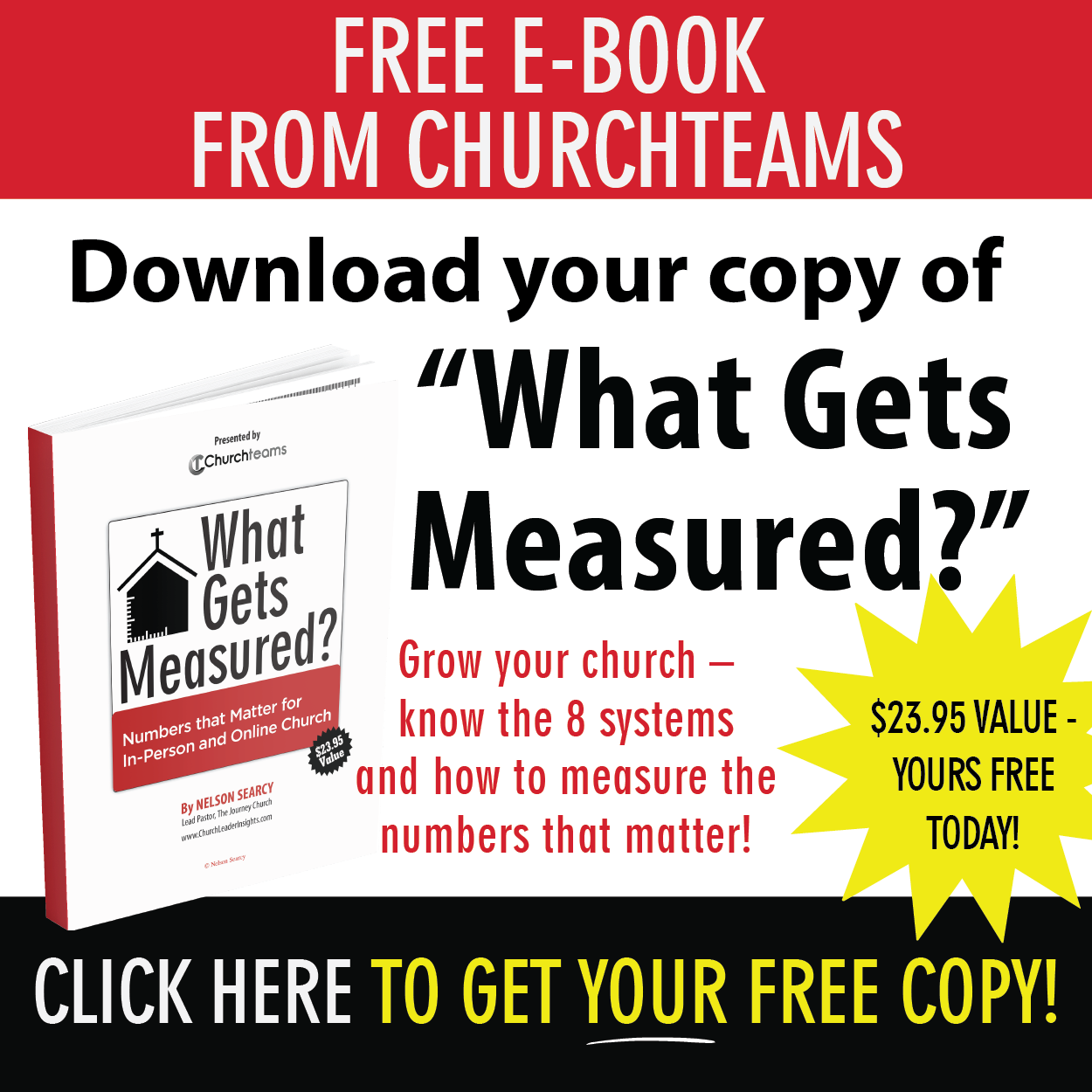 There are two parts to every event registration or survey form software. The first part is the design of the form itself. In Churchteams this includes: member attributes, registration fields, member notes, payment, fund designation, embed code, hyperlink, text keyword, header, completion response, confirmation email, multiple registrants, and redirect links. I have written a lot about the abilities and upgrades of these features in previous blogs.
There are two parts to every event registration or survey form software. The first part is the design of the form itself. In Churchteams this includes: member attributes, registration fields, member notes, payment, fund designation, embed code, hyperlink, text keyword, header, completion response, confirmation email, multiple registrants, and redirect links. I have written a lot about the abilities and upgrades of these features in previous blogs.
However, it occurred to me recently that I have never written a blog dedicated to the second part of registrations and forms software which is the spreadsheet that houses the results. In Google Forms this is the responses page. That data can also be exported into Google Sheets or Excel.
In Churchteams, this is the Group Info page. You can export the responses to Sheets or Excel, but keeping it in the Churchteams CRM gives you access to other information in your database. Here are 5 best practices for using and analyzing registration and from responses from this page.
1. Customize the Group View
The advantage of using the CRM itself to view and analyze registration or survey responses is that you have access not only to the fields on the form, but any other member attributes, registration fields, notes, and a few specialized fields like "related family members" that are housed in the database.
At the top of the response table in a group is the dropdown of options for group views. These are edited, created, and saved as the default group view from the customize dropdown.

Fields that are included in the registration or survey form are automatically included in the group view.
2. Track individual and summary payments
 If a registration form includes a payment, there is no need for ministry staff to have to track those in a separate spreadsheet. Nor do they need to depend on a financial admin to track payments for them.
If a registration form includes a payment, there is no need for ministry staff to have to track those in a separate spreadsheet. Nor do they need to depend on a financial admin to track payments for them.
Our best practice is to track everything in the group view. You can view, edit and even refund payments for individuals as needed. Plus, the bottom row sums both the amount paid and the balance due.
3. Send payment reminders
Not only can you track payments, but you can also select those who still owe and send them an email with the total they owe and a link to make their next payment. Notice that option in the top row of the Registration Payment column.
This is 2024, there is no longer a need to do the math, make a list, and then track students or parents down to inform them how much they still owe. Do all of that at once plus add in a payment link! This is how it's supposed to be done today.
4. Analyze response summaries
 Create member attributes that use a drop down for responses and each response is not only shown for the individual, but it is also collectively summarized in the bottom row.
Create member attributes that use a drop down for responses and each response is not only shown for the individual, but it is also collectively summarized in the bottom row.
In the example to the right you see we added colors to the dropdown options for member attributes to make them stand out. Imagine getting this level of discipleship feedback on an group of people!
Click here for more information on color coding and tracking discipleship using data you already have.
If you use a digital connection, the summary row at the bottom is a powerful way to get an at-a-glance summary of recent worship responses.

5. Track conversations
In addition to traditional data like that mentioned above, we recommend using our Notes feature to track conversations and follow up tasks. These allow you to add any unique comment, concern, or assignment alongside the other information in the group as spreadsheet. This is a significant advantage over dedicate registration or survey software.

There are entire software platforms built around event registrations or survey forms. You've likely used some of them. If the feedback you are collecting needs to be anonymous or has no correlation with the data in your CRM, these tools are fine.
However, if you want to aggregate information, manage payments, or assign follow tasks; you are better off using a tool designed to do all those things in one place. If you're a client and need help with any of these practices, let us know. If you're not a client, join me for a live Meet The Software webinar to learn more.



